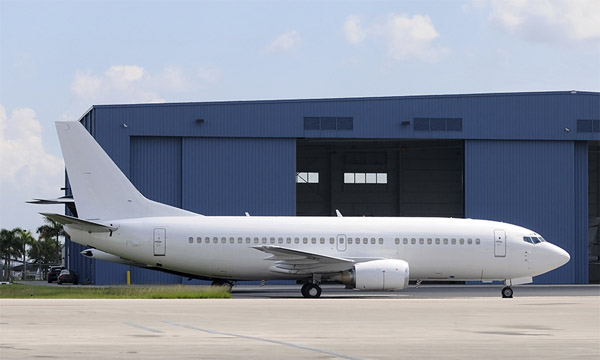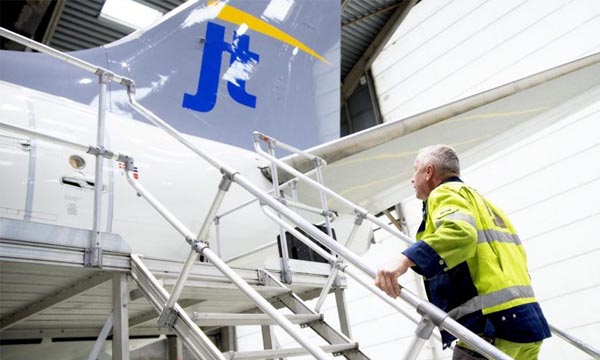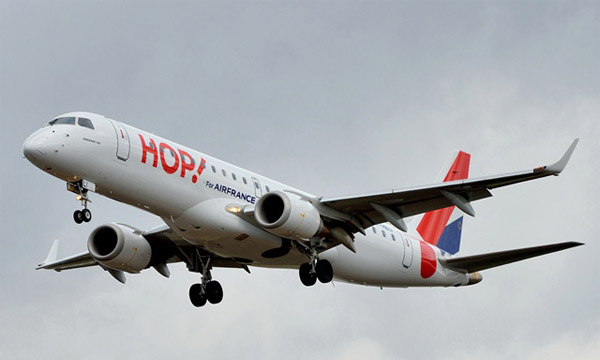Maintenance reserves, a balance to be struck |
| Léo Barnier |
|
|
28 MAR 2019 | 1290 words
|
 |
© Carlyle Aviation Partners |
|
|
|
Since deregulation in 1978 by the United States president Jimmy Carter, financial players have seen their importance in the air transport sector grow, to where they now occupy a dominant position in relation to traditional actors. This is the case for aircraft leasing, which now accounts for some 60% of the worldwide commercial fleet in operation. The maintenance reserves that airlines need to have to be able to access an aircraft are one example of this dominant position. Several actors talked about this specific point at the Etats de l'air conference organised by the ENAC Alumni association at the DGAC's premises in Paris in February.
Addressing this conference, Pascal Dufour, Head of Aircraft Trading and Asset Management at Airbus, took the opportunity of his first public speaking engagement to make things clear. He defined maintenance reserves as "servicing provisions" paid by a customer airline to a leasing company, to cope with the events which will occur during the lifetime of a leased plane. In the event of a maintenance operation, the principle is that the airline paid and the leasing company then refunds them.
Pascal Dufour sees this practice as a logical consequence of the liberalisation which has been underway in air transport for around forty years: "Deregulation has led to much more dynamic fleet management with the creation of the operational lease concept. And there is one very simple principle in this activity: you pay for what you use. But we often see that payment for what we use only comes later, during a maintenance event". This may be a complicated situation for the leasing company to manage when the aircraft has switched between operators in the meantime or if the customer airline goes bust. This is why these famous provisions are required.
 Maintenance reserves may account for 60 to 100% of the leasing fee already paid. © Jet Time
Maintenance reserves may account for 60 to 100% of the leasing fee already paid. © Jet Time
Security or income?
When questioned about these maintenance reserves for leasing companies - security first and foremost or income - Pascal Picano, marketing director at Carlyle Aviation Management, replied: "It's both. It depends on the generation of the aircraft, its type, its age and its equipment plan. It also depends on the airline's risk profile ".
At any rate, he justifies the cost by the significant risk taken by the leasing company due to the major reinvestment costs needed for the engines, the equipment which is often obsolete, or even the cabin before it can be leased again to another airline. The reserves also protect the leasing company against any uncertainties related to how the aircraft is used, especially as they have no control over how it is operated. Finally, Pascal Picano sees that "things are turning full circle" after the abuse carried out by certain airlines for a long time.
This opinion contrasts with the opinion of Grégoire Delatte, who is in charge of fleet management at Air France HOP, for whom this system represents first and foremost "a lot of cash that airlines lend for free to leasing companies". "I understand that leasing companies want to maintain the value of their assets", he continues. "But we are already leasing an aircraft and we have made a commitment to maintain, and we also need to hand over cash ".
"All of this requires delicate financial gymnastics", laments Grégoire Delatte, given the significant amount of cash flow which is tied up for the customer airline and the numerous transactions needed during a maintenance operation. He also sees these reserves as a gateway for leasing companies to get involved in the aircraft's operational lifetime.
His point of view is shared by Jérôme Abat, fleet manager for Denmark's Jet Time: "From a financial point of view, leasing a Boeing 737-800 costs 100 000 dollars per month. As for maintenance reserves, the airline will also be paying the equivalent of 60 to 100% of this leasing amount ". And he specifies that the payment of these reserves, or at least their amount, will depend on the power balance between the airline and the leasing company. So, a regional operator or a start-up will pay more than a well-established worldwide group.
Calculation differences
One of the main bottlenecks in this system is in how the provision amounts are calculated. When the leasing contract is signed, the different stakeholders need to take account of all eventualities, whether scheduled maintenance or not. They then also need to calculate the maintenance costs as closely as possible, given that they may vary widely between an airline which operates a few aircraft and a leasing company like Carlyle, which has over 200 aircraft in its portfolio, with the major economies of scale which go with them. "The leasing companies have their own scales", regrets Grégoire Delatte.
Pascal Picano concedes that the calculation may be delicate when this equipment is coming to the end of its operational life and the reserve amount needs to be adapted as a result. Pascal Dufour adds that for his part the region of the world where the aircraft is serviced also needs to be taken into account.
Jérôme Abat is familiar with these contracts and notes that airlines get their reserves back after a maintenance operation in 90% of cases. However, he does explain that in the past he has ended up with amounts of money frozen by leasing companies for over one year. The situation can then quickly become problematic, in particular when the cost of the maintenance operation exceeds the amount deposited with the leasing company and vice versa.
The leasing company may then estimate that the maintenance operation carried out does not correspond to the market's going rate - at least what they are entitled to - and then only refund part of the expenses committed by the airline. They may also claim that an operation is not covered by the conditions defined for the maintenance reserves and therefore that they don't need to refund them.
 HOP has opted for a PBH solution with Embraer for its new Embraer 190s leased from Nordic Aviation Capital. © Air France HOP
HOP has opted for a PBH solution with Embraer for its new Embraer 190s leased from Nordic Aviation Capital. © Air France HOP
Three-party solutions
To limit this friction, Pascal Picano mentions the existence of another solution, with a three-party agreement signed directly between the leasing company, the customer airline and a MRO. The reserves are then paid directly to the maintenance company. "When you know each other well, it's all very easy", says Carlyle's marketing director. "It also lets the leasing company see what's being done to its asset and at what cost, and help the operator lower this cost and check the work done by the MRO. In the future, we will have more partnership solutions, where we will work together to manage the activity better". In any case, this option seems to be attracting more and more takers.
In certain cases, this type of contract may also be signed directly with the manufacturer (except for brakes and engines). This formula has also been retained by Grégoire Delatte and Air France HOP for the lease of seven new Embraers, with a flight-hour maintenance contract (PBH). The provisions are then paid directly to the aircraft manufacturer. "This three-party commitments reassure leasing companies and airlines too, who have a view of the cash flow to an actor who is involved directly in maintaining the aircraft. What we don't like are surprises".
This does not exclude a detailed calculation of the prices and the services included. And it still requires real cooperation between the different stakeholders to guarantee visibility for each of them over the maintenance operations.
|
|
 |
Léo Barnier
Specialized journalist
Industry & Technology, Equipments, MRO
|
|
| |
They made this section possible |
|
|
|
|
|
|
|
|
|
|
|
|
|
|
|
|
Top stories |
|
|
|
|
|
Top stories
|